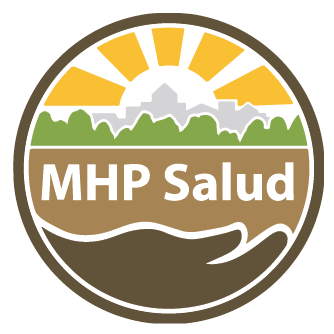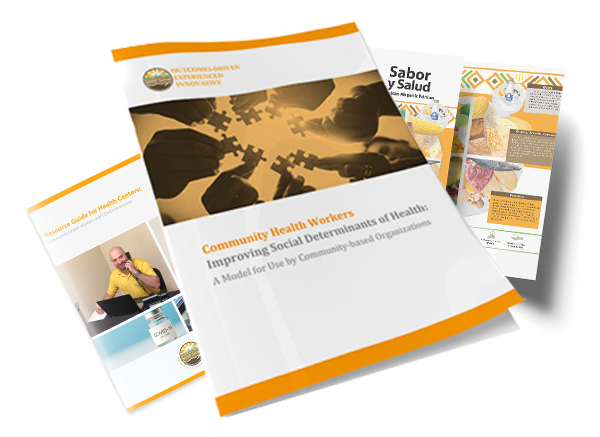Implementing Support Strategies and Practices for the Community Health Workforce
Community Health Workers (CHWs) are trusted neighbors who translate complex health systems into caring, personalized support (American Public Health Association [APHA], n.d.). In every conversation, home visit, and resource referral, CHWs build bridges that make health care feel possible. For many individuals, CHWs are the first and often only connection to vital services. And every day, CHWs show up with compassion, understanding, and a deep commitment to care.
However, this commitment can carry a heavy physical and emotional toll. Long days and high caseloads can place CHWs at distinct risk for compassion fatigue and burnout—two workplace realities that can erode health, motivation, and the joy of service (Compassion Fatigue Awareness Project, 2017; Mayo Clinic Staff, 2023).
As a CHW, it is important to recognize these challenges, not just for your own well-being, but because the healthier you are, the more sustainable your impact can be. This article offers a practical roadmap to help CHWs keep their “cups” full through intentional selfcare.
Understanding burnout and compassion fatigue
Burnout and compassion fatigue can look and feel very similar, and many CHWs experience both. Burnout is the exhaustion that comes from ongoing workplace stress—tight schedules, constant demands, and not enough time or support (Mayo Clinic Staff, 2023). If left unaddressed, burnout is linked to higher absenteeism, depressive disorders, and even cardiovascular disease (American Psychological Association [APA], 2023).
Compassion fatigue happens when you have been exposed to others’ pain for so long that it starts to wear down your own sense of empathy (Compassion Fatigue Awareness Project, 2017). While the causes of burnout and compassion fatigue are a bit different, the signs often overlap, and the effect on CHWs and the communities they serve is just as serious. Recognizing the signs early is key.
What to look for: Signs you’re running on empty
It is not always obvious when stress is turning into something more serious. Here are a few signs to pay attention to:
- Feeling drained or irritable
- Trouble focusing or making decisions
- Getting sick more often
- Losing motivation or feeling disconnected from the work you usually love
- Doubting your effectiveness or wondering if you are making a difference
These symptoms do not mean that you are not strong or capable; they mean you are human. And they signal that it is time to refill your cup.
Why self-care matters
Self-care is not necessarily about spa days or long vacations—though those are great if you can get them! At its core, self-care is about doing small, intentional things to support your physical, emotional, and mental health (HelpGuide, 2020). It is a way to stay grounded in a job that often asks you to give so much of yourself.
In fact, studies show that regular self-care improves focus, motivation, energy levels, and even your ability to connect with others (HelpGuide, 2020). It helps prevent burnout, lowers the risk of depression, and supports your role as a CHW, a colleague, a friend, and a family member. In other words, taking care of yourself helps you take better care of others.
Practical selfcare strategies CHWs can start today
Self-care can look different for everyone, and it does not have to be time-consuming or expensive. It can be as simple as five minutes to breathe, a check-in with a coworker, or a walk after a long day.
Self-care spans several parts of life—physical, spiritual/reflective, emotional, social, professional, intellectual, financial, and environmental (Bustle, 2020). Finding a balance across these areas helps you stay whole, not just at work but in life.
Here are a few ideas to get started:
Physical
- Schedule movement “micro breaks” (stretch, shoulder rolls, or a brisk five-minute walk)
- Drink plenty of water and keep healthy snacks nearby
Spiritual/Reflective
- Start your day with gratitude or a calming routine
- Try the “Fill Your Cup” journaling exercise—reflect on what’s lifting you up and what’s draining you (see below)
Emotional
- Check in with yourself daily—how are you really feeling?
- Practice deep breathing or mindfulness during stressful moments
Social
- Check in regularly with professional peers for support
- Set healthy boundaries around after-hours calls and texts
Professional
- Share the benefits of a manageable caseload
- Look for growth opportunities like webinars, mentorship, or leadership training
Intellectual
- Set aside 10–15 minutes to read something inspiring or educational
- Listen to an audio training on a topic that interests you
Financial
- Track your spending to reduce stress around money
- Set a small savings goal for something that brings you joy
Environmental
- Keep your workspace tidy and add something calming (like a photo or plant)
- Listen to calming music during your commute or transitions
The “Fill Your Cup” exercise
This simple journaling activity can help you pause and reflect on how you’re really doing.
- Find a quiet moment. Take a few deep breaths.
- Picture your life as a cup. Is it full? Half-empty? Cracked?
- Jot down your “fillers”—things or people that give you energy and joy.
- Then list your “drainers”—things that drain your strength or leave you feeling depleted.
- Look over your “fillers” and “drainers”. Do you notice any themes? What can you do more of? What needs to be let go?
- Repeat this exercise regularly. Even small shifts can make a big difference.
And most importantly, give yourself grace. Remember to love yourself and care for your own needs, so you can care for the needs of others.
Knowing when to ask for help
Sometimes self-care is not enough and that is okay. If you are feeling overwhelmed, depressed, anxious, or just not like yourself, reach out. There is no shame in needing support.
Resources to keep in mind:
- 988 Suicide & Crisis Lifeline – Call or text 988 anytime
- Employee Assistance Programs (EAP) – Many offer free counseling and mental health resources
Burnout and compassion fatigue are real and common in CHW work, but there are simple impactful ways to combat these issues. Self-care supports your health, well-being, and your impact on the community you serve. By caring for yourself, you’re making sure you can care for others.
Download a PDF of this resource
References
American Psychological Association. (2023, May 12). Employers need to focus on workplace burnout: Here’s why. https://www.apa.org/topics/healthy-workplaces/workplace-burnout
American Public Health Association. (n.d.). Community Health Workers. https://www.apha.org/apha-communities/member-sections/community-health-workers
Bustle. (2020, August 14). Types Of Self-Care & How To Practice Them, According To Experts. https://www.bustle.com/wellness/types-of-self-care-how-to-practice-experts
Compassion Fatigue Awareness Project. (2017). What is Compassion Fatigue? http://www.compassionfatigue.org/pages/compassionfatigue.html
HelpGuide International. (2020, October). Burnout Prevention and Treatment. https://www.helpguide.org/articles/stress/burnout-prevention-and-recovery.htm
Mayo Clinic Staff. (2023, May 12). Job burnout: How to spot it and take action. https://www.mayoclinic.org/healthy-lifestyle/adult-health/in-depth/burnout/art-20046642





